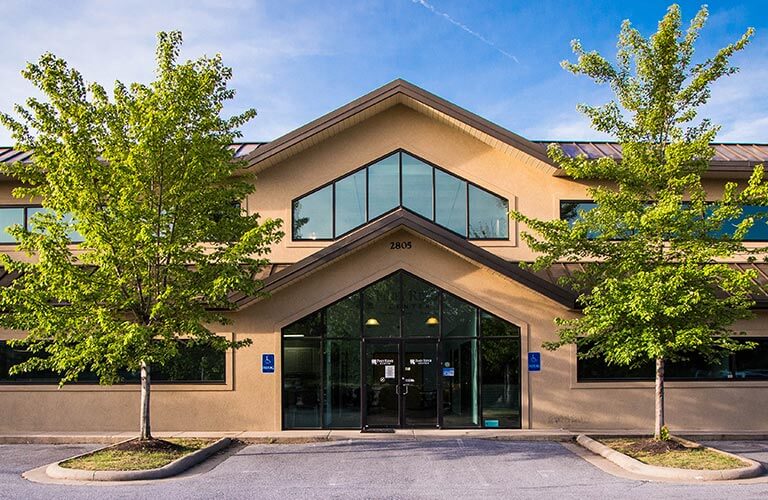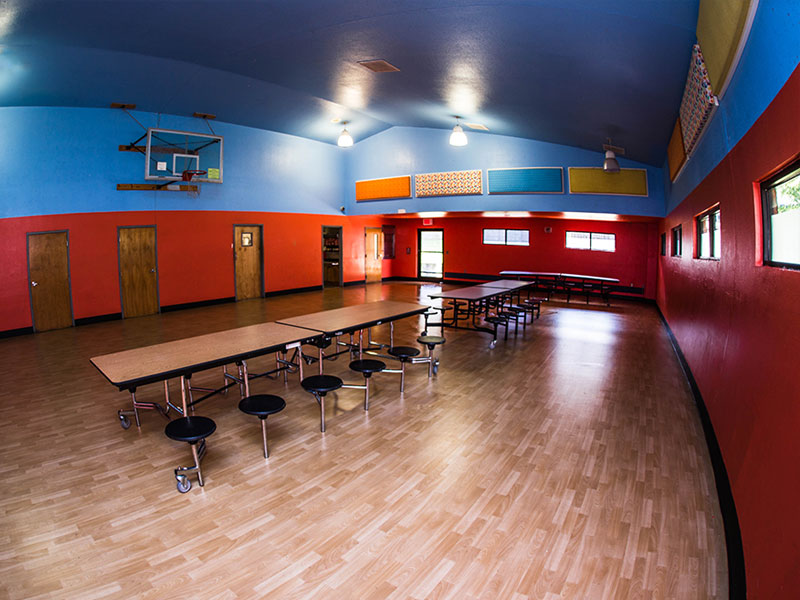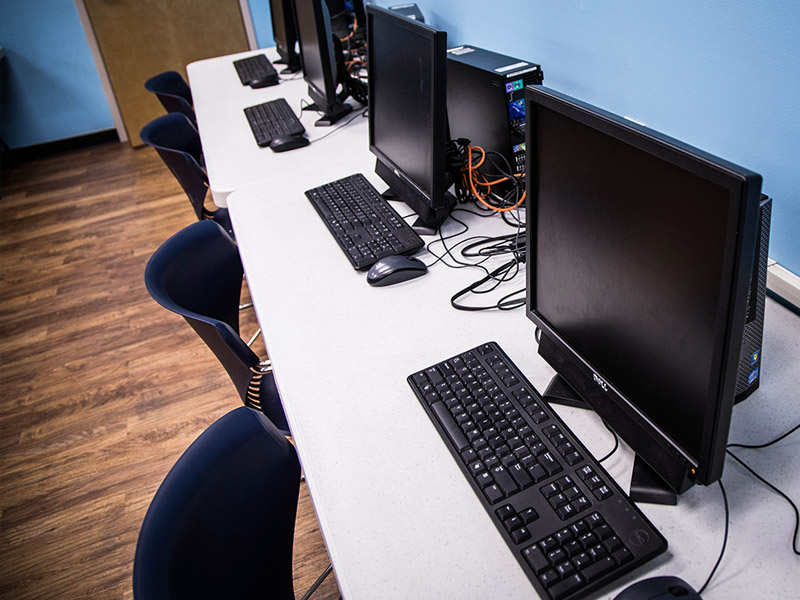Piney Ridge Treatment Center helps children & adolescents struggling with aggression build a strong foundation for long-term recovery. Located in Fayetteville, AR, Piney Ridge is the leading provider of DISORDER treatment.
Understanding Aggression
Learn about aggression
Aggression is considered to be any type of action that a person or group of people uses with the intention of causing pain, suffering, and/or damage to another person, group of people, or property. Aggressive behaviors are considered to be powerful, antagonistic, and/or attacking and may occur with or without provocation. In addition, the offender must believe that his or her conduct will damage the victim and as such, the target of the aggression is driven to evade the attack. While anger and aggression often comingle, they are not synonymous terms. Anger is a normal and necessary feeling that allows children and teens to instinctively react to threats and stimulates powerful emotions that permit a person to fight when attacked. When anger is expressed in an assertive and non-aggressive manner, it allows individuals to make their needs known without harming others. Uncontrolled anger, however, can become damaging and bring about aggressive actions.
While aggression is often associated with physical violence alone, there are a multitude of aggressive actions. Physical aggression (often called “assault”) includes acts such as hitting, beating, or kicking another person, while verbal aggression includes screaming at others or making threats. There exist two general groups of aggressive behaviors: affective aggression and instrumental aggression.
Affective aggression, also called “hostile aggression” or “retaliatory aggression” is often used when a child or teen experiences intense anger. Affective aggression includes impulsive, unplanned, overt, semi-uncontrolled, and spur-of-the-moment behaviors. Affective aggression is often used to physically or emotionally harm another person or group of people. Samples of affective aggressive behaviors may include:
- Hitting
- Kicking
- Biting
- Pinching
- Spitting
- Hair-pulling
- Pushing
Instrumental aggression, also called “predatory aggression,” is a purposeful, premeditated form of aggressive behavior that can be physical or interpersonal. Children and teens who use instrumental aggression often do so without provocation in an attempt to obtain a particular outcome or coerce others as a means to an identifiable end. Instrumental aggression involves preemptive, deliberate, and cold-blooded behaviors often delivered by those who have traits that include lack of remorse, decreased empathy, and guilt about their actions. One of the most common forms of instrumental aggression is called relational aggression, which is often used by children and teens to spread rumors, gossip, socially exclude, or otherwise hurt a peer or group of peers. Examples of instrumental aggression include:
- Bullying
- Teasing
- Spreading rumors
- Gossiping
- Excluding others
- Name-calling
- Destruction of objects
- Ignoring
Often used synonymously, it’s worth noting that aggression is not the same as conflict. Rather conflict is the result of two or more people having opposing goals or interests. Conflict is resolved in different manners including negotiation, persuasion, or taking turns. Aggressive behaviors are a way that some children and teens overcome conflicts, however, not all conflicts involve aggression.
There are a multitude of motives for a child or teen, or a group of children, to behave aggressively including, and are not limited to:
- As a means to express anger or hostility
- To threaten or bully another
- To achieve a goal or a means to an end
- To express possession or to assert themselves as dominant
- In response to fear or pain
- As a form of competition
Childhood and teen aggression has been getting much attention from schools, concerned parents, and healthcare professionals, in part because aggression during these ages tends to remain fixed and stable over time. Childhood and teen aggression is associated with a range of negative outcomes that, without proper intervention, may persist well into adulthood. Physical and verbal aggression is often the first symptom, but later the defining characteristics of serious childhood and teenage mental health disorders can include oppositional defiant disorder (ODD) and conduct disorder (CD).While occasional outbursts of aggression and anger are quite common and normal, aggressive behaviors in teens and children become problems as these outbursts occur often or in a pattern. Aggressive behaviors in teens and children stem from an inability to control behaviors or a misunderstanding of appropriate responses to challenges in life. Many times, this aggressive behavior is self-directed and can lead to serious disability in these children.
Causes and Risk Factors
Causes and risk factors for aggression
Aggression is not a diagnosis, but rather a symptom of many different problems, which can include mental health disorders and medical conditions. Parents and caregivers should try to keep in mind that there are no “all bad” children and teens. Any time aggressive behavior is causing problems in a child or teen’s life, a physician should be promptly notified so the symptoms can be evaluated. Children and teens struggling with extreme aggression require an effective, individualized treatment plan that focuses upon more than symptom abatement to achieve the best possible outcomes.
Mental illnesses that may have aggression as a symptom may include:
Attention-deficit hyperactivity disorder (ADHD): Children and teens who have ADHD may struggle with proper decision making, which, when combined with the impulsivity of the disorder, may lead to aggressive behaviors. However, these aggressive behaviors are not necessarily malicious in nature; it may be that these children and teens are unable to comprehend how their actions are affecting others.
Autism/autism spectrum disorders (ASDs): As ASDs are typified by an inability to understand and process emotions, those who have ASDs are often unable to handle feelings of frustration or anxiety in a more normal fashion. This can cause aggressive behaviors and outbursts. Also, aggressive behavior for those who have ASDs may be the result of impulsive actions done without considering the consequences or outcomes.
Childhood/adolescent bipolar disorder: Children and teens diagnosed with bipolar disorder may lose control of their emotions and lash out during a manic episode. During a depressive cycle, these same children may become irritable and aggressive.
Conduct disorder (CD): Largely, conduct disorder is evidenced by aggression toward others. However, unlike children who cannot comprehend the consequences of their actions, children with conduct disorder are calculatedly malicious toward others – including animals. Their actions are intended to cause harm.
Oppositional defiant disorder (ODD): ODD is a mental health disorder characterized by an ongoing pattern of cantankerous moods and argumentative, defiant behavior towards those in authority. People who have ODD may cause physical harm to other people or property.
Schizophrenia: Schizophrenia is characterized by delusions and hallucinations that are very real to the child or teen experiencing them. During a break in reality, the child or teen cannot determine what is real and what is not; as a result, the hallucinations or delusions may lead to aggression.
As each of these mental illnesses present differently in each child, it is vital for parents and caregivers to obtain a proper diagnosis from a highly-trained child or adolescent psychiatrist. Prompt, early treatment of mental health disorders leads to more positive outcomes.
Researchers in the field tend to agree that aggression in children and teens is not the result of a single cause or risk factor, but rather it is a complex interplay of personal, familial, community, culture, and environmental factors. These include:
The child: A child or teen’s ability to manage his or her aggression is directly linked to individual temperament and learned coping abilities. Temperament is the part of personality that is assumed to be related to genetics and includes these broad types:
- Easy child – child has a positive approach to new situations and can accept frustration and change with little fuss
- Slow-to-warm-up child – child has mild negative responses when exposed to new situations but adapts with repeated exposure
- Difficult child – child has a negative response to new situations, is slow to adapt to change, and exhibits occasional oppositional and aggressive behaviors
There are biological differences and influences exhibited in the child and teen. Certain brain structures and functions can lead to the development of aggressive behaviors.
The family: Levels of family stress and positive and negative interactions among family members can influence a child’s learning of aggression. Children often model their behaviors after adults, observing and imitating the ways in which these adults handle frustration and anger. Additionally, first-degree relatives who have some form of mental illness that has features of aggression may pass on these disorders through genetics.
The community: Communities that support and understand the rights of children are those that support children and their different developmental states. Communities in which there are supportive adults and healthy recreational alternatives can protect children as they learn to deal with a number of situations.
The environment: Certain studies have shown that housing, neighborhoods, and schools can contribute to aggression. Specifically pain, heat, and overcrowding in the child’s environment can lead to aggressive behaviors.
There are a number of risk and protective factors that influence a child or teen’s development of aggressive behaviors:
Risk factors for childhood and teen aggression:
- History of violence
- Victim of sexual or physical abuse
- Exposure to violence at home or in the environment
- Hereditary factors
- Drug or alcohol abuse
- Access to firearms
- Stressful family life
- Brain damage from a traumatic brain injury
Reduction of the following factors may reduce or prevent aggressive behaviors:
Protective factors for aggression:
- Do not hit children as a form of punishment
- Parents should model appropriate behaviors through their own actions
- Providing children and teens with consistent love and support
- Providing clear-cut rules and consequences for rule violations
- Reducing the amount of violence that a child is exposed to
Ways to Help
Ways to Help Children and Teens Control Aggression
While any serious concerns for aggression should immediately warrant a trip to see the child’s doctor, there are some home care techniques that can help children and teens learn to control their behaviors. The following are suggestions for helping children and teens control their aggression:
- Use reasoning to explain things
- Accept that a child has a unique temperament
- Be consistent so children and teens know what to expect
- Set clear-cut expectations for behaviors
- Organize home environment so it doesn’t become overwhelming
- Limit access to aggressive toys
- Monitor television and internet usage for aggressive shows
- Be a model for controlled behavior by avoiding angry outbursts and violence
- Monitor your child’s friends and activities outside the home
- Avoid being pessimistic, lax, or too tolerant
- Allow for transition between activities with a warning that change is coming
- Help children work together to solve problems
- Redirect the child
- Offer choices to allow child to feel empowered
- Remove an out-of-control child from the activity
- Provide encouraging feedback by saying things like, “I like the way you handled that problem”




